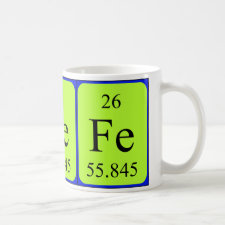
Authors: Yalinca Z, Yilmaz E, Bullici FT
Article Title: Evaluation of chitosan tripolyphosphate gel beads as bioadsorbents for iron in aqueous solution and in human blood in vitro.
Publication date: 2012
Journal: Journal of Applied Polymer Science
Volume: 125
Issue: (2)
Page numbers: 1493-1505.
DOI: 10.1002/app.34911
Abstract: Nonimprinted and Fe3+ imprinted chitosan tripolyphosphate gel beads were prepared via physical gel formation. A method based on in situ crosslinking using ethylene glycol diglycidyl ether was developed to imprint the chitosan tripolyphosphate gels with Fe3+ ion without deteriorating the gel beads. The beads were characterized by FTIR, SEM, XRD, and DSC with respect to the chemical structure, surface morphology, crystallinity, and thermal behavior. Swelling kinetics and Fe3+ ion adsorption behavior from aqueous solution were studied. The Fe3+ imprinted and in situ crosslinked beads proved to be durable and effective adsorbents for Fe3+ in solution. The bead prepared by in situ crosslinking and in the presence of 10 mM template ion had an equilibrium iron adsorption capacity of 53.9 mg/g after 3-hour contact with 5 mM Fe3+ solution. The pros and cons of the beads as biomedical iron adsorbents were tested by evaluating their serum iron removal capacities from human blood. The preliminary tests carried out showed that Fe3+ imprinted beads were more effective in decreasing serum iron in human blood when compared to the nonimprinted beads. The decrease in serum iron level accompanied a parallel decrease in the hemoglobin level. The calcium level was also affected upon contact with the beads. The Fe3+ imprinted beads were less effective than the nonimprinted ones in decreasing the calcium level indicating selectivity towards iron containing species. © 2012 Wiley Periodicals, Inc. J Appl Polym Sci, 2012
Template and target information: iron ions, ferric ions, Fe(III)
Author keywords: crosslinking, molecular imprinting, hydrogels, adsorption, biopolymers



Join the Society for Molecular Imprinting

New items RSS feed
Sign-up for e-mail updates:
Choose between receiving an occasional newsletter or more frequent e-mail alerts.
Click here to go to the sign-up page.
Is your name elemental or peptidic? Enter your name and find out by clicking either of the buttons below!
Other products you may like:
 MIPdatabase
MIPdatabase









